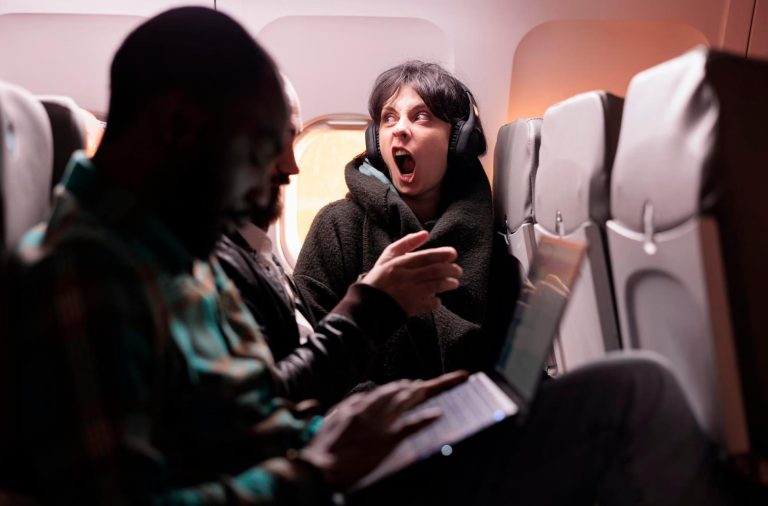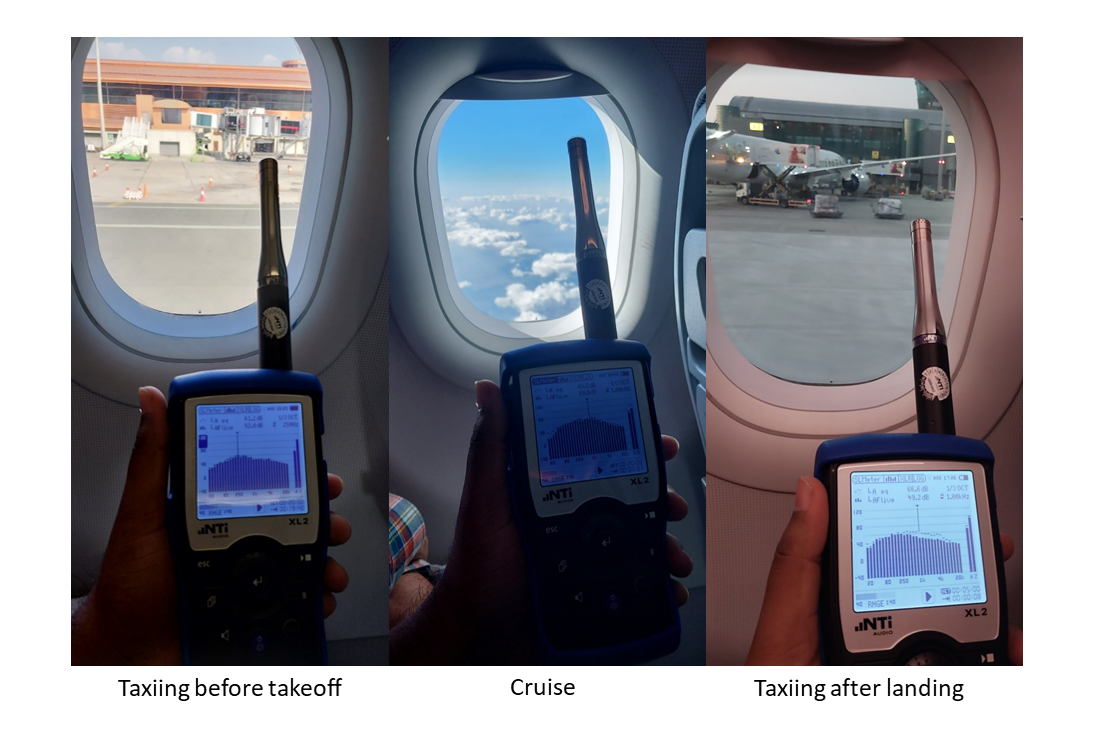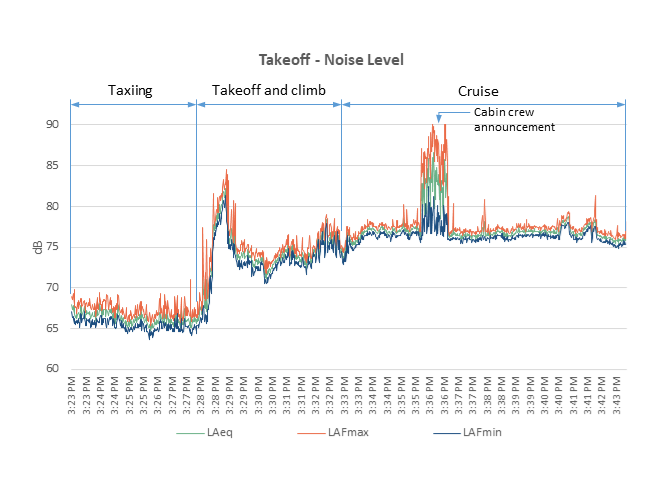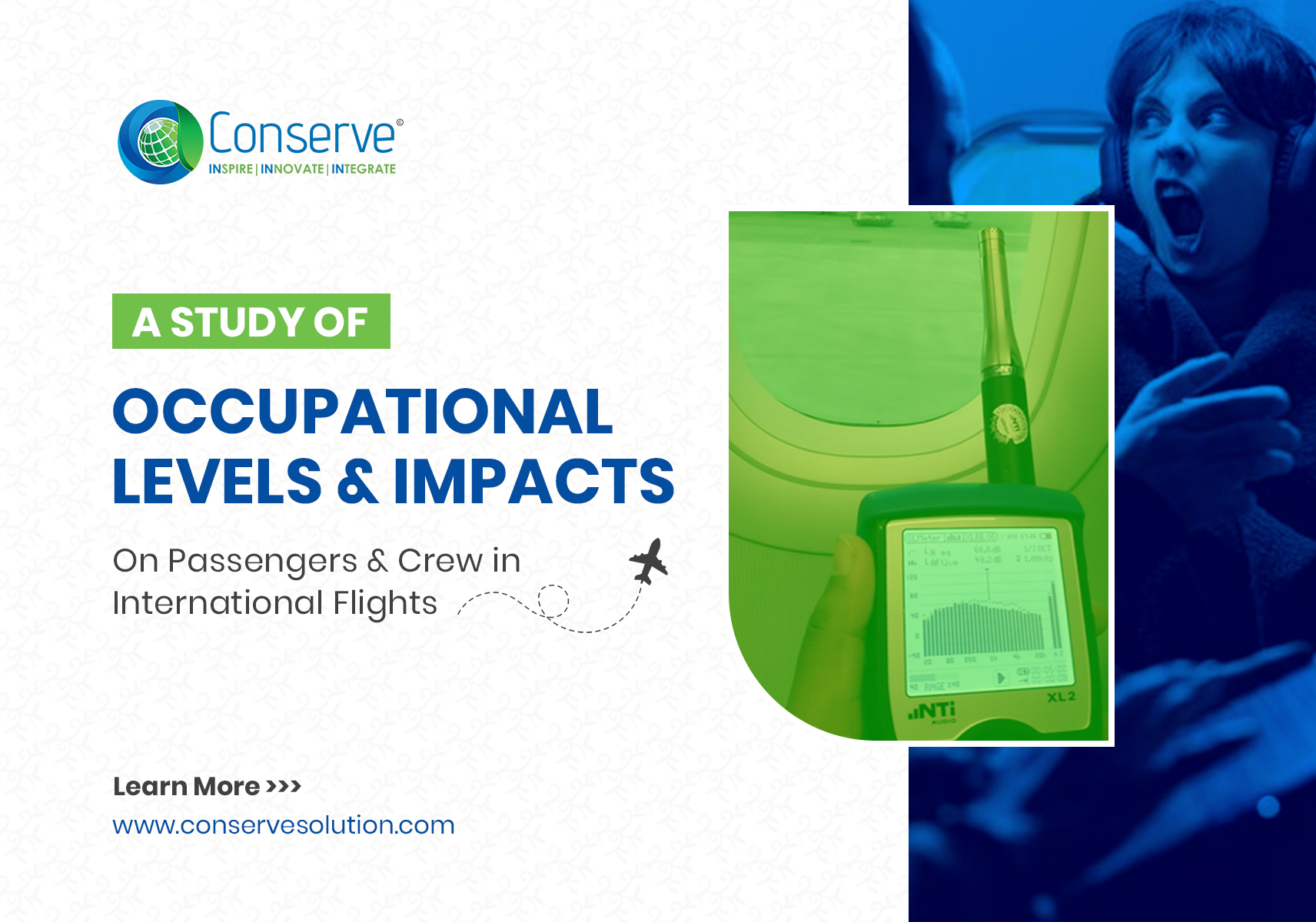Air travel became and will remain an essential mode of transportation across the globe. Are you the one who shuttles between cities / countries? This write-up is for you. Passengers and Crew members are often exposed to high noise levels during flight take-off, landing, and during cruise from engine, air conditioning system and fellow passengers.

These noise sources are sometimes more than allowable limits, can contribute to auditory system deterioration, hearing loss, sleep disturbance, cardiovascular disease and diminished learning capacity over the period of time. We were curious to understand this by testing it in real time. This article summarizes results from a noise level measurement study conducted during an international flight. We have verified compliance with the OSHA (Occupational Safety and Health Administration) standards for noise exposure and discussed some common noise sources and potential impacts on passenger hearing. We have also added some suggestions on hearing protection measures, especially for longer travels.
Our measurement focuses on 5 phases of flight: Taxiing, Take-off, Landing, Cruise and Parking modes and we have used a Class 1 type sound level meter.

OSHA standards for exposure to noise (29 CFR 1910.95) specifies a maximum permissible exposure limit (PEL) of 90 dBA for an 8-hour workday.


Conclusion
Conserve Solutions as a leading consultant for Acoustic Solutions it is our responsibility to educate our clients, customers and young professionals in the market. We intend this series of articles to share our interesting experiences, lessons learned, case studies.
Author
-

Sheik is an Assistant Project Manager in Acoustics Division, having completed a Bachelor's Degree in Mechanical Engineering and a Post Graduate Diploma in Acoustics & Noise Control from Prestigious Institute of Acoustics (IOA), UK. He has over 7 years of professional consultancy experience in various Engineering domains such as Acoustics, Sustainability and Building Services.


